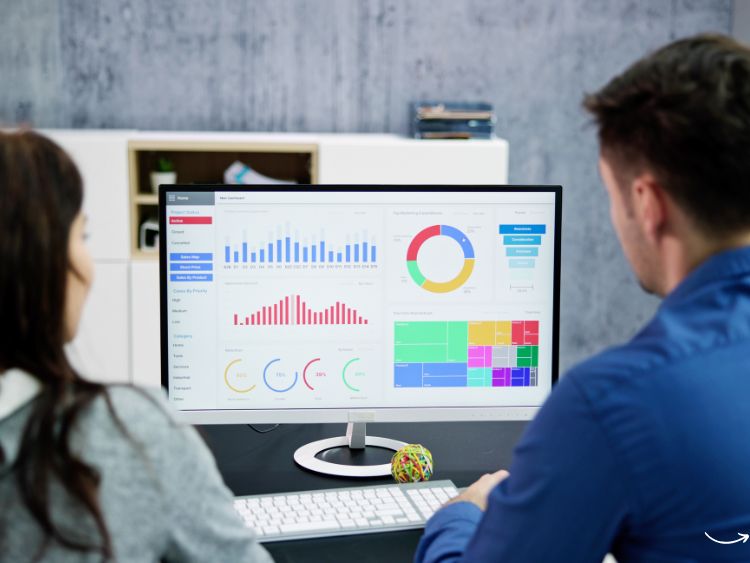Retail Customer Analytics: Unlocking the Secrets to Customer Behavior
In the fast-paced world of retail, understanding customer behavior isn’t just a luxury; it’s a necessity. Retail customer analytics is the key to unlocking these secrets, offering insights that can transform your business strategies and drive success. But what exactly is retail customer analytics, and how can it benefit your business? Well, buckle up, because we’re about to dive deep into the world of customer data, patterns, and trends that can make or break your retail business.
What is Retail Customer Analytics?
Retail customer analytics involves the collection, processing, and analysis of customer data to understand their behavior, preferences, and purchasing patterns. By leveraging this data, retailers can make informed decisions, tailor their marketing strategies, and ultimately improve the customer experience. Whether it’s through analyzing shopping habits, customer feedback, or sales data, retail customer analytics provides a comprehensive view of what’s driving your customers’ decisions.
Why Retail Customer Analytics Matters
So, why should you care about retail customer analytics? Here’s the deal—understanding your customers at a granular level allows you to anticipate their needs, personalize their shopping experience, and stay ahead of the competition. In today’s digital age, customers expect retailers to know what they want before they even know it themselves. By using retail customer analytics, you can meet and exceed these expectations, leading to increased customer loyalty and higher sales.
Key Benefits of Retail Customer Analytics:
- Enhanced Customer Experience: By understanding customer preferences, you can offer personalized recommendations, targeted promotions, and seamless shopping experiences.
- Increased Sales: Analytics can help identify which products are in demand, allowing you to optimize inventory and focus on high-margin items.
- Improved Marketing Strategies: With insights into customer behavior, you can create targeted marketing campaigns that resonate with your audience, leading to higher conversion rates.
- Customer Retention: Understanding what keeps your customers coming back enables you to develop strategies to enhance loyalty and reduce churn.
How Retail Customer Analytics Works
Retail customer analytics isn’t just about crunching numbers—it’s about turning data into actionable insights. The process generally involves several steps, each crucial in building a comprehensive understanding of your customer base.
- Data Collection: The first step is gathering data from various sources. This could include point-of-sale systems, online shopping carts, customer feedback, social media interactions, and more. The goal is to collect as much relevant data as possible to get a 360-degree view of your customers.
- Data Processing: Once the data is collected, it needs to be cleaned and organized. This involves removing any duplicate entries, correcting errors, and standardizing the data format to ensure consistency.
- Data Analysis: Now comes the fun part—analyzing the data to uncover patterns and trends. This could involve using statistical methods, machine learning algorithms, or even simple data visualization techniques to make sense of the information.
- Insights Generation: The analysis should lead to actionable insights. For instance, you might discover that a particular demographic prefers shopping during certain times or that certain products are frequently bought together. These insights can then be used to inform business strategies.
- Action: Finally, the insights are put into action. This could involve adjusting inventory levels, launching targeted marketing campaigns, or redesigning the store layout to enhance the shopping experience.
Common Tools Used in Retail Customer Analytics
To effectively analyze customer data, retailers often rely on a variety of tools and technologies. These tools help in collecting, processing, and analyzing data, making it easier to derive actionable insights.
- CRM Systems: Customer Relationship Management (CRM) systems are essential for tracking customer interactions and storing customer data. They provide a centralized platform for managing customer relationships and can integrate with other analytics tools for a more comprehensive analysis.
- Google Analytics: For online retailers, Google Analytics is a powerful tool that provides insights into customer behavior on your website. It tracks metrics such as page views, bounce rates, and conversion rates, helping you understand how customers interact with your online store.
- Predictive Analytics Tools: Tools like SAS, IBM Watson, and Tableau offer predictive analytics capabilities, allowing you to forecast future trends based on historical data. These tools can help you anticipate customer needs and adjust your strategies accordingly.
- POS Systems: Point-of-sale systems not only handle transactions but also collect valuable data on customer purchases. This data can be analyzed to identify purchasing patterns and trends.
Real-World Examples of Retail Customer Analytics
Let’s take a look at how some major retailers have used customer analytics to their advantage.
- Amazon: Amazon’s recommendation engine is a prime example of retail customer analytics at work. By analyzing customer purchase history, browsing behavior, and even wish lists, Amazon can suggest products that customers are likely to buy. This personalized approach has significantly contributed to Amazon’s success.
- Starbucks: Starbucks uses retail customer analytics to optimize their rewards program. By analyzing customer purchasing habits, they can send personalized offers and rewards that encourage repeat visits. This strategy has helped Starbucks build a loyal customer base.
- Walmart: Walmart uses predictive analytics to optimize their supply chain. By analyzing sales data, they can predict demand for products and adjust inventory levels accordingly. This has helped Walmart reduce waste and improve efficiency.
Challenges in Retail Customer Analytics
While retail customer analytics offers numerous benefits, it’s not without its challenges. Here are some common hurdles retailers face:
- Data Privacy: With increasing concerns over data privacy, retailers must ensure that they handle customer data responsibly. This involves complying with regulations such as GDPR and ensuring that customer data is stored securely.
- Data Integration: Retailers often collect data from various sources, such as online stores, physical stores, and social media. Integrating this data into a single platform can be challenging but is crucial for a comprehensive analysis.
- Interpreting Data: While collecting data is one thing, interpreting it correctly is another. Retailers need to ensure that they have the right expertise to analyze data and derive meaningful insights.
FAQs about Retail Customer Analytics
Q: How can small retailers benefit from retail customer analytics?
A: Small retailers can use customer analytics to personalize the shopping experience, optimize inventory, and create targeted marketing campaigns. Even simple analytics tools can provide valuable insights.
Q: Is retail customer analytics only for online retailers?
A: No, retail customer analytics can be beneficial for both online and brick-and-mortar retailers. While online stores might have more data sources, physical stores can also collect valuable data through POS systems and customer surveys.
Q: What’s the difference between predictive analytics and retail customer analytics?
A: Retail customer analytics is a broader term that encompasses various types of analysis, including descriptive, diagnostic, and predictive analytics. Predictive analytics is specifically focused on forecasting future trends based on historical data.
Q: Can retail customer analytics help with customer retention?
A: Absolutely! By understanding what drives customer loyalty, retailers can create strategies to retain customers, such as personalized offers and rewards programs.
Q: How can retailers ensure data privacy when using customer analytics?
A: Retailers should comply with data protection regulations, anonymize customer data when possible, and ensure that they use secure systems to store and process data.
Conclusion
Retail customer analytics is a powerful tool that can transform the way you do business. By understanding your customers at a deeper level, you can create personalized experiences, optimize your operations, and stay ahead of the competition. Whether you’re a small retailer or a global giant, leveraging customer analytics is key to thriving in today’s retail landscape. So, why not start unlocking the secrets of your customers’ behavior today?
Authoritative Links
- https://www.gartner.com/en/information-technology/glossary/retail-analytics
- https://www.forbes.com/sites/bernardmarr/2020/02/10/15-best-retail-analytics-solutions-for-2020/
- https://www.mckinsey.com/business-functions/marketing-and-sales/our-insights/using-analytics-to-improve-customer-experience
This article not only delves into the importance and workings of retail customer analytics but also provides practical examples and addresses common challenges, making it a comprehensive guide for anyone interested in this crucial aspect of modern retail.







